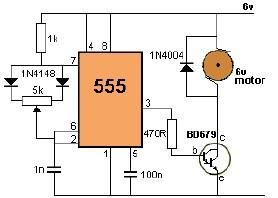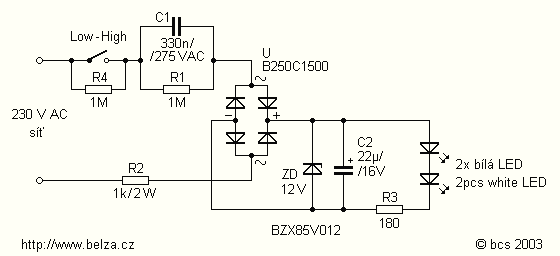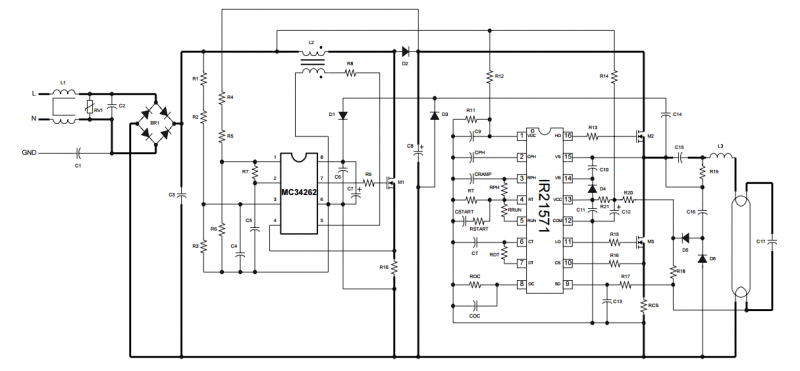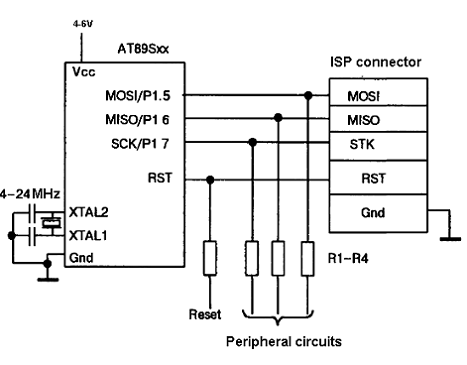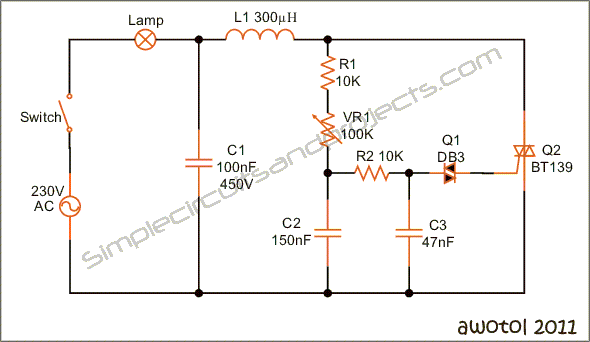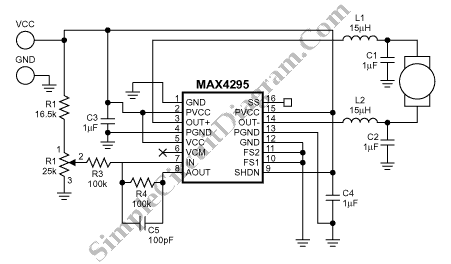
60 Light Sequencer using a Matrix
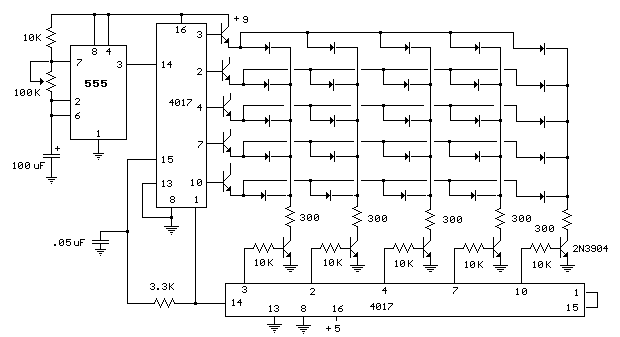
The circuit illustrated below employs a 10x10 matrix to control up to 100 LEDs using only three integrated circuits (ICs) and 20 transistors. Two 4017 decade counters manage the 10 rows and 10 columns, allowing for the selection of one LED based on the outputs of the decade counters. For an expansion of the circuit to accommodate 60 LEDs for displaying minutes or seconds on a clock, the rows counter can be reset from pin 12 (carry out) instead of pin 1 as shown, and the columns counter can be reset from pin 5 rather than pin 1. Additionally, transistors should be connected to pins 1, 5, 6, 9, and 11 of the rows counter and pin 1 of the columns counter. Refer to the "10 Stage LED Sequencer" for a comprehensive listing of all connections related to the 4017 decade counter.
The 10x10 LED matrix circuit is designed to efficiently manage a large number of LEDs while minimizing component count. The two 4017 decade counters serve as the core of the design, enabling the sequential activation of rows and columns. Each counter can drive 10 outputs, corresponding to the rows and columns of the matrix, ensuring that only one LED is illuminated at any given time.
In the proposed expansion to 60 LEDs, the configuration of the reset pins is crucial. By resetting the rows counter from pin 12, the circuit can cycle through additional rows, effectively increasing the range of LEDs that can be controlled. Similarly, resetting the columns counter from pin 5 allows for greater flexibility in the sequencing of the columns, accommodating the additional LEDs.
The inclusion of transistors in the circuit is essential for driving the LEDs effectively. These transistors act as switches, allowing for higher currents to flow through the LEDs than the counters can provide directly. The specified connections to the 4017 outputs ensure that each transistor is activated in sync with the counters, facilitating the desired LED illumination pattern.
For implementation, careful attention should be paid to the power supply requirements and the current ratings of the LEDs and transistors to ensure reliable operation. Additionally, the layout of the circuit should minimize interference and ensure that signal integrity is maintained, particularly in a densely packed matrix configuration. The "10 Stage LED Sequencer" reference provides detailed pin connections and configurations necessary for proper functionality, serving as a valuable resource for designers looking to replicate or modify this circuit.The circuit below illustrates using a 10x10 matrix to sequence up to 100 LEDs with just three ICs and 20 transistors. The two 4017 decade counters control the 10 rows and 10 columns so that one LED is selected depending on the output of the decade counters.
For example, to expand the circuit to 60 LEDs for displaying minutes or seconds of a clock, the rows counter could be reset from pin 12 (carry out) rather than pin 1 as shown, and the columns counter will be reset from pin 5 rather than pin 1 as shown. And then add transistors to pins 1, 5, 6, 9, and 11 of the rows counter and pin 1 of the columns counter.
Take a look at the "10 Stage LED Sequencer" for a listing of all the connections of the 4017 decade counter. 🔗 External reference
The 10x10 LED matrix circuit is designed to efficiently manage a large number of LEDs while minimizing component count. The two 4017 decade counters serve as the core of the design, enabling the sequential activation of rows and columns. Each counter can drive 10 outputs, corresponding to the rows and columns of the matrix, ensuring that only one LED is illuminated at any given time.
In the proposed expansion to 60 LEDs, the configuration of the reset pins is crucial. By resetting the rows counter from pin 12, the circuit can cycle through additional rows, effectively increasing the range of LEDs that can be controlled. Similarly, resetting the columns counter from pin 5 allows for greater flexibility in the sequencing of the columns, accommodating the additional LEDs.
The inclusion of transistors in the circuit is essential for driving the LEDs effectively. These transistors act as switches, allowing for higher currents to flow through the LEDs than the counters can provide directly. The specified connections to the 4017 outputs ensure that each transistor is activated in sync with the counters, facilitating the desired LED illumination pattern.
For implementation, careful attention should be paid to the power supply requirements and the current ratings of the LEDs and transistors to ensure reliable operation. Additionally, the layout of the circuit should minimize interference and ensure that signal integrity is maintained, particularly in a densely packed matrix configuration. The "10 Stage LED Sequencer" reference provides detailed pin connections and configurations necessary for proper functionality, serving as a valuable resource for designers looking to replicate or modify this circuit.The circuit below illustrates using a 10x10 matrix to sequence up to 100 LEDs with just three ICs and 20 transistors. The two 4017 decade counters control the 10 rows and 10 columns so that one LED is selected depending on the output of the decade counters.
For example, to expand the circuit to 60 LEDs for displaying minutes or seconds of a clock, the rows counter could be reset from pin 12 (carry out) rather than pin 1 as shown, and the columns counter will be reset from pin 5 rather than pin 1 as shown. And then add transistors to pins 1, 5, 6, 9, and 11 of the rows counter and pin 1 of the columns counter.
Take a look at the "10 Stage LED Sequencer" for a listing of all the connections of the 4017 decade counter. 🔗 External reference
